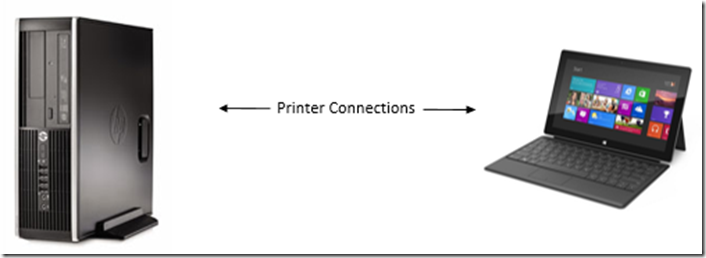Windows 8.1 / Windows Server 2012 R2 - Printer Roaming
Hello again AskPerf! Today I’m going to introduce a new Windows 8.1 feature called Printer Roaming.
Windows 8 provided the ability for users to roam a number of settings with their Microsoft account, such as the desktop background and web history.
Windows 8.1 extends this functionality to include roaming of printer connections, and this is primarily aimed at bring-your-own-device (BYOD) scenarios.
If you use Microsoft-connected accounts in your workplace (i.e. an account tied to a Hotmail.com or Outlook.com e-mail address), Windows 8.1 will store your UNC printer connections in the cloud and reconnect them on other Windows 8.1 devices you bring into the workplace.
So, let’s say you’ve manually mapped 3 printer connections (e.g. \\ServerName\PrinterShare) on your Windows 8.1 desktop PC at work. When you bring a Windows 8.1 tablet into the workplace, the operating system will keep your printer connections in sync by automatically connecting them.
This feature is currently grouped with Other Windows Settings, which can be found in the SkyDrive options in the PC Settings application.
There are a few important caveats that I’d like to note.
- Printer connections pushed through group policy are not automatically connected. This feature is aimed at personalizing the experience for printers the user has manually connected.
- Only queues utilizing v4 printer drivers will be roamed. This guarantees compatibility with Windows RT clients.
- This feature currently offers only an on/off toggle, and we are looking into making this more customizable in the future.
- If you use Microsoft-connected accounts in your workplace and want to disable Printer Roaming, all of the Sync settings in Other Windows Settings must also be disabled.
- Individual printer connections cannot be configured to roam or not roam.
At this point we see very few businesses implementing Microsoft-connected accounts in their environments, but this feature may become more mainstream in the future as Microsoft accounts evolve.
-Aaron

